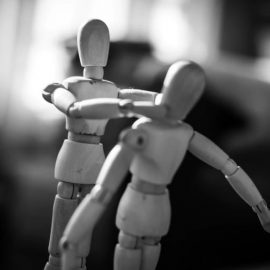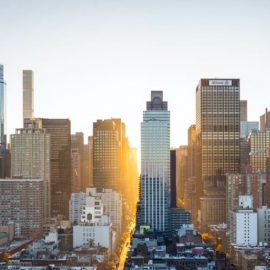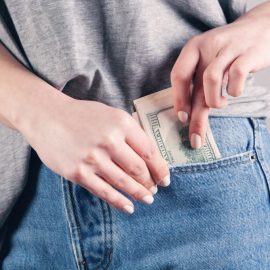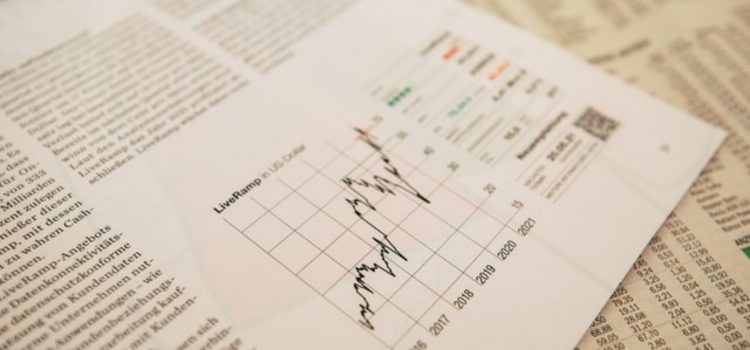
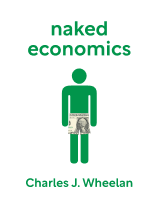
This article is an excerpt from the Shortform book guide to "Naked Economics" by Charles J. Wheelan. Shortform has the world's best summaries and analyses of books you should be reading.
Like this article? Sign up for a free trial here .
What exactly is a recession? How do economic recessions happen?
Recessions are periods of time during which an economy’s GDP shrinks. Recessions are generally caused by a shock to the system (e.g.the bursting of the stock market or real estate bubbles, a steep rise in oil prices). Often a combination of causes leads to recession.
In this article, we’ll discuss the measures governments take to recover from a recession and make the economy self-sustaining again.
How Do Recessions Happen?
Because every part of modern markets are interconnected, the failure of one part of the economy can quickly cause other parts to fail as well. For example, if your income suddenly drops because of a stock market correction, you will respond by spending less money. Your decreased spending makes other people’s income decrease, who then respond by also spending less money, which spreads the pain throughout more and more sectors of the market.
When this kind of slowdown reaches banks, the entire economy can quickly freeze up. Our economy is very much based on credit: Many of the most basic business transactions require individuals and firms to borrow money from banks. When they can’t, businesses can no longer invest or conduct business with each other, and individuals can’t borrow money to pay for things like houses, cars, or college. Everything grinds to a halt.
This is essentially what happened during the financial crisis that began in 2007. First, homeowners leveraged themselves highly: they took on more debt than they could finance in order to pay for new homes, fueling a property bubble. They did so on the understanding that if they found themselves unable to repay their mortgages, they could simply sell their houses and pay off the debt. However, this strategy could only work if home values continued to rise, and when the property bubble burst and home values dropped, people found themselves unable to pay their mortgages and also unable to sell their homes for enough money to cover their debts.
The resulting wave of foreclosures devastated investment banks. These banks were not only highly leveraged with mortgages but also with the credit default swaps we discussed earlier, which amplified the effects of homeowners defaulting on their mortgages. Lehman Brothers, a major investment bank, declared bankruptcy, and the global financial market froze as panicked banks stopped lending people money.
Countering Recessions
To recover from a recession, governments can change their fiscal policies or their monetary policies to encourage businesses to begin investing and consumers to start spending.
Fiscal Policy
Through its fiscal policy, a government encourages spending by injecting money into the economy. It can do so by cutting taxes, which allows people and businesses to keep more of their income and then (ideally) spend it. It can also do so by creating stimulus programs that put money directly into the hands of consumers and businesses. For example, stimulus packages might mail checks directly to individuals or allow firms to apply for no-cost loans, or they may fund programs that create jobs, such as infrastructure projects like road-building.
Monetary Policy
Through its monetary policy, a government controls the supply of money in an economy. The Federal Reserve (the “Fed”) is the governmental agency in charge of monetary policy in the U.S. and is the world’s most powerful agency when it comes to affecting the economy, both domestic and global. Its monetary policy is the most powerful tool it has.
Monetary policy controls the amount of money in a market by increasing or decreasing short-term interest rates. Cutting interest rates allows consumers to buy more things and allows firms to invest because borrowing is cheaper. Raising interest rates puts a break on the economy by raising the cost of money itself, making it harder for individuals and businesses to borrow capital.
The Fed uses these mechanisms to pull the economy out of recessions and also to prevent recessions from happening in the first place by keeping the economy growing at a healthy clip. Importantly, a healthy clip means growing not too fast and not too slow, and it can be difficult to strike the right balance.
Not Too Fast: Inflation
When an economy grows too slowly, production outstrips demand. People don’t buy goods that firms produce, so those goods sit idle in warehouses or on lots, with no buyers. Unemployment rises because firms don’t need to hire workers if there are no transactions happening. The Fed can prevent this by decreasing interest rates and therefore making money cheaper, which encourages people to spend it.
Some people (often politicians) advocate for continually decreasing interest rates so that consumers and businesses can spend and invest all they want. However, there are limits to the speed an economy can grow. Firms can only produce items at a certain pace—a pace that depends on the availability of labor, factories, time, and other resources. Problems can arise when an economy is pushed faster than this pace. When consumers have easy access to cheap capital, they flood the marketplace with demand for items. When firms can’t keep up with demand, the market becomes unbalanced, with demand exceeding supply. As we discussed earlier, when demand exceeds supply, prices rise.
This leads to inflation: a continual and somewhat rapid increase in prices of almost everything in an economy, including both goods and services. To understand why inflation is so problematic, think of it not as prices increasing, but as the purchasing power of each dollar decreasing. This means that if you have $100, you might be able to buy four shirts today, but a month from now, you might only be able to buy two shirts.
Inflation leads to all sorts of problems:
- People stop saving money because their money will be worth less tomorrow than it is today.
- Banks become reluctant to loan money. Inflation benefits people who borrow money but punishes those who lend it, because when the loan gets repaid, both the principal (the loan’s initial value) and interest have fallen in value. Germany’s inflation in the 1920s illustrates this danger: If you secured a fixed-rate mortgage in 1921, you could have paid the whole thing off in 1923 for less than the cost of a newspaper. Consequently, during inflation, people looking for credit have a harder time finding it, which, as we discussed above, can hold up all kinds of economic growth.
- Taxes become distorted. If you pay taxes on assets, such as stocks, that have depreciated in value because of inflation, you’re doubly losing money—first from the depreciation, and then from the taxes.
Consequently, the Fed aims to set interest rates at a level that encourages growth but doesn’t allow inflation to set in.
Not Too Slow: Deflation
On the other end of the spectrum are persistent price decreases. On the one hand, price decreases are an expected part of a healthy economy: As we discussed earlier, productivity can lead to increased purchasing power because goods are relatively cheaper in terms of how many work-hours it takes to purchase them. This is overall a good thing, allowing people to buy more with their money.
On the other hand, prices that are continually falling are terrible for an economy. This is called deflation, and it’s as destructive to an economy as inflation.
Deflation is a danger during recessions, making them much harder to recover from. When wealth drops after an economic shock, people start spending less on goods and services. When demand decreases because of this, prices drop. At a certain point, price drops perpetuate themselves: People postpone purchases knowing prices will drop further (why buy a television today if it will be cheaper next month?), which causes prices to drop even further, and so on.
The negative effects of this are significant. Decreased demand for goods and services leads to fewer jobs needed to produce them, so unemployment rises. House prices drop, leading to a decrease in wealth for households and an increase in foreclosures. People caught between unemployment and decreasing asset values (such as homes) are unable to repay loans, and banks, scared of future defaults, stop making new loans, which again, freezes the economy.
To make matters worse, monetary policy is often unable to stop deflationary cycles in the same way it can stop inflationary cycles. Once a government drops interest rates to zero, it can’t go any further, but that may not be enough to make money cheap and spark spending. This is because, during deflation, your money gets stronger (the opposite of what happens during inflation, when your money gets weaker).
In other words, if you have $10, you might be able to buy two shirts today, but three shirts next month. This also means that if you borrow $10 today (two shirts worth), you’ll be paying back a more expensive $10 next month (three shirts worth). Thus, even with an interest rate of zero, it can be quite costly to borrow money. In a stagnant economy, people will not borrow expensive money, and lending shuts down, bringing the economy down with it.
Japan suffered through many years of deflation in the late 1990s and early 2000s, underscoring how difficult it is to break the cycle. When America flirted with deflation in 2007, the Fed lowered interest rates until they were no longer helpful, and then resorted to some creative ways to encourage spending—it allowed banks to borrow from the government anonymously so as not to burden them with the stigma of being in financial trouble, and eased certain regulations to make borrowing easier. In other words, it did whatever it could to inject money into the economy to stave off a deflationary cycle. This seems to be the only way to stop deflation: to flood the market with money by doing “anything short of dropping bank notes out of helicopters,” as one economist put it.

———End of Preview———
Like what you just read? Read the rest of the world's best book summary and analysis of Charles J. Wheelan's "Naked Economics" at Shortform .
Here's what you'll find in our full Naked Economics summary :
- An explanation of economics that anyone can understand
- How governments and firms can use incentives to foster a healthy economy
- How and why people behave in certain ways

